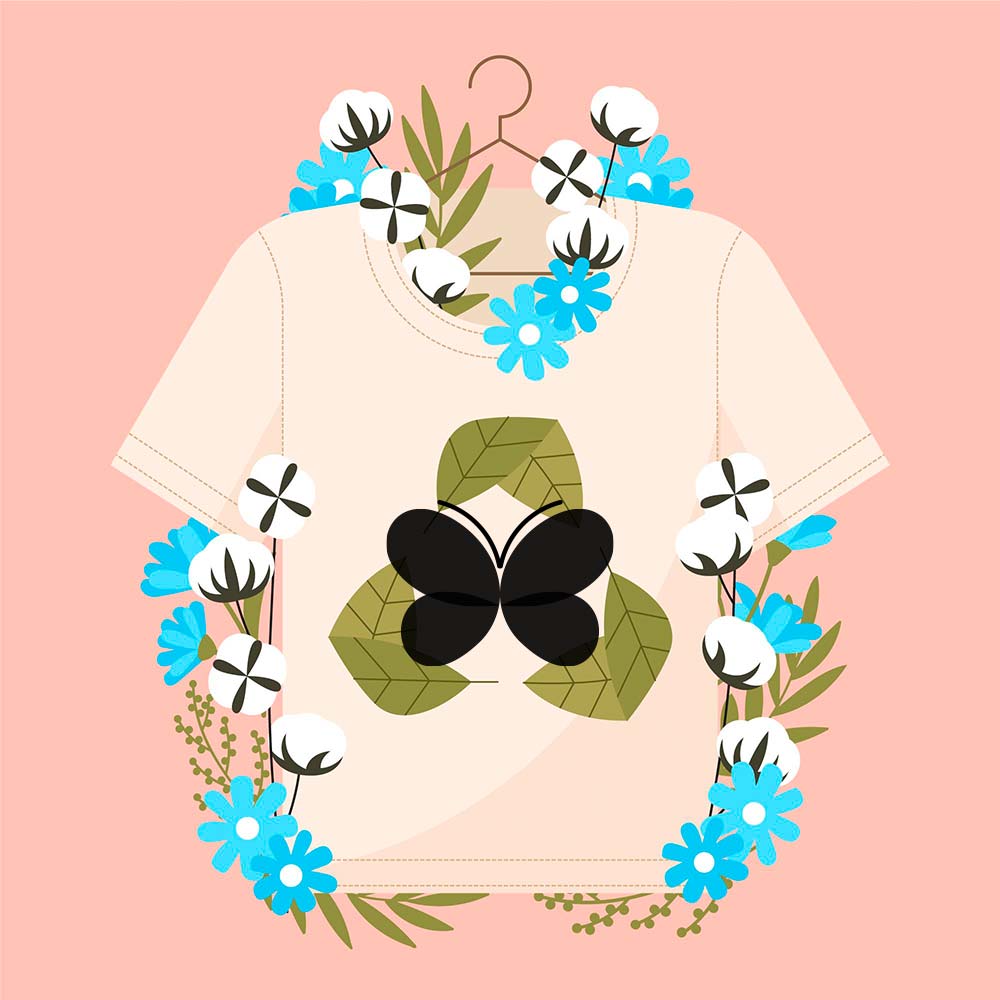Butterflies Give Wings to New Recyclable Textiles

On a planetary highway used to transport global waste to a gigantic landfill, a garbage truck dedicated exclusively to textile waste would pass by every second. Or, in other words, ninety-two million tons per year. We usually think of plastics, glass, or organic waste when discussing recycling. However, the textile industry produces 8% of greenhouse gases. Unfortunately, only 1% of the clothing produced each year worldwide is recycled. Is there a technological breakthrough to reverse this situation?
The main challenge in achieving more efficient recycling is the collection of garments and the difficulty of separating them according to their different materials. Fortunately, butterflies, specifically their wings, show how to optimize it, thanks to a recent technological breakthrough in biomimetics or biomimicry, i.e., applying principles or structures present in nature. Chaos theory says that the flapping of a butterfly in Hong Kong can unleash a storm in New York. Who knows, maybe its wings also hold the secret to revolutionizing how we consume and recycle our clothes.

The structural color out of wings
Separating textiles usually requires manual inspection, often made difficult by the loss of labels, or chemical analysis. Both processes are very demanding in terms of human or economic resources. Fortunately, MIT in the United States has turned to the colorful wings of butterflies to create a kind of barcode that could be integrated into every item of clothing. Let’s see how it works.
The wings of these Lepidoptera are one of the most striking phenomena in nature. However, what we perceive as colors in their wings are not pigments, but nanostructures that reflect light with different wavelengths thanks to their layered arrangement. This is known as “structural color.”
The project’s approach has been to create a new type of fiber that is colorless to the eye but reveals a specific footprint when exposed to infrared light. In this way, they go unnoticed until they reach the recycling plant, where they are scanned and separated according to the material of each garment.
Smart (and recyclable) garments
At MIT’s Lincoln Laboratory, they are working to develop future fabrics. These will be the materials that will make it possible to create intelligent or functional garments, i.e., that add other capabilities in addition to the insulation or protection that traditional clothing usually offers. To this end, the integration of electronic components or the manufacture of unprecedented fibers is being used. In the case of the barcode for textile recycling, they have developed a new fiber based on a block of polymers called preform that will contribute to reducing the ecological footprint of clothing.
Specifically, the preform of this project consists of fifty alternating layers of acrylic and polycarbonate that, when heated, stretch like liquid candy to form filaments barely a micron thick. Once braided, threads with unique reflective qualities can be formed and woven into the fabric. This is where the key to the project lies. The ultimate goal is to create a type of fiber that corresponds to each textile: one type of yarn for cotton, another for wool, and so on. The total amount of these smart fibers would be a tiny percentage of the whole garment. Still, it would be enough to be correctly identified at the recycling plant and thus contribute to a more sustainable textile industry.
Other technologies inspired by butterfly wings
The exquisite complexity of butterfly wings offers other lessons in biomimetics beyond the smart garments and textile barcodes developed by MIT. In the natural realm, the various colors, patterns, and structures of butterfly wings serve to deter predators, dissipate heat, or even detect ultrasound emitted by bats as they forage for food. These properties have translated into some surprising applications:
- More efficient solar panels, thanks to photovoltaic cells that better absorb solar radiation.
- Radiant metamaterials that dissipate heat and allow buildings to be cooled.
- Wind turbine blades based on their nanostructures.
- Triboelectric nanogenerators (TENGs) to harvest wave energy.
- Temperature and light biosensors, including anti-fraud systems thanks to their optical effects.
- Photocatalytic systems that allow the generation of green hydrogen by means of sunlight.
There are countless other applications for butterfly wings, but we’ll leave it there for now. If you want to know more about biomimetics, you can read this article about systems to improve energy efficiency or this one about new construction materials inspired by the exoskeleton of beetles. You can also find more information about smart clothing here.
Source:

